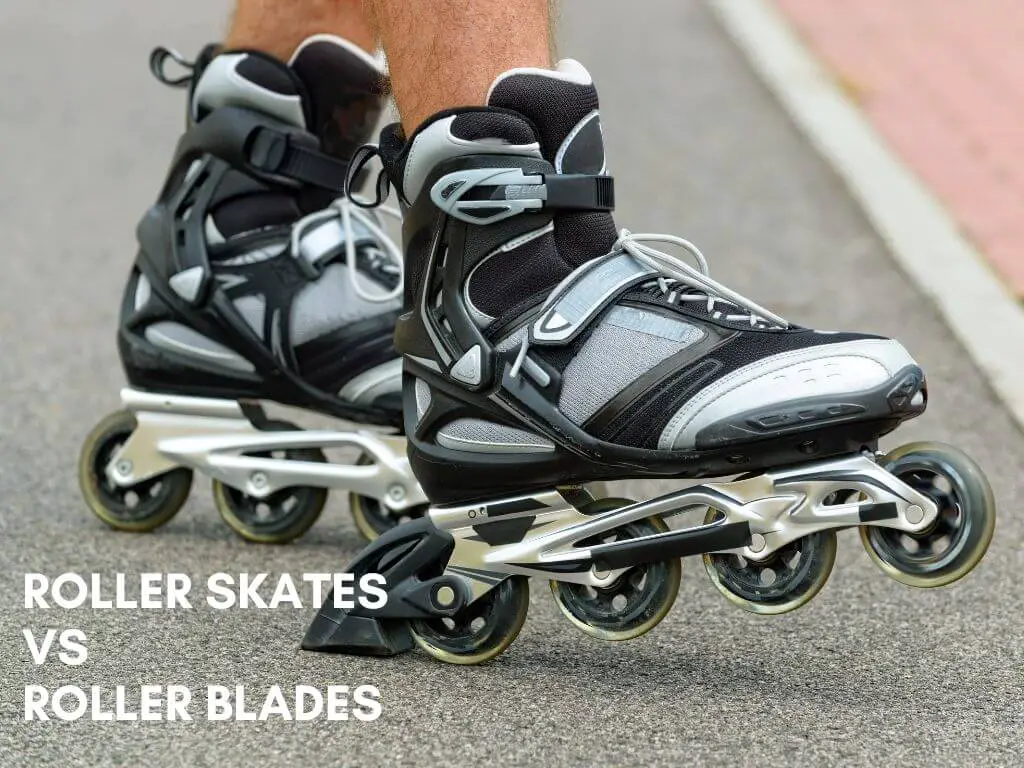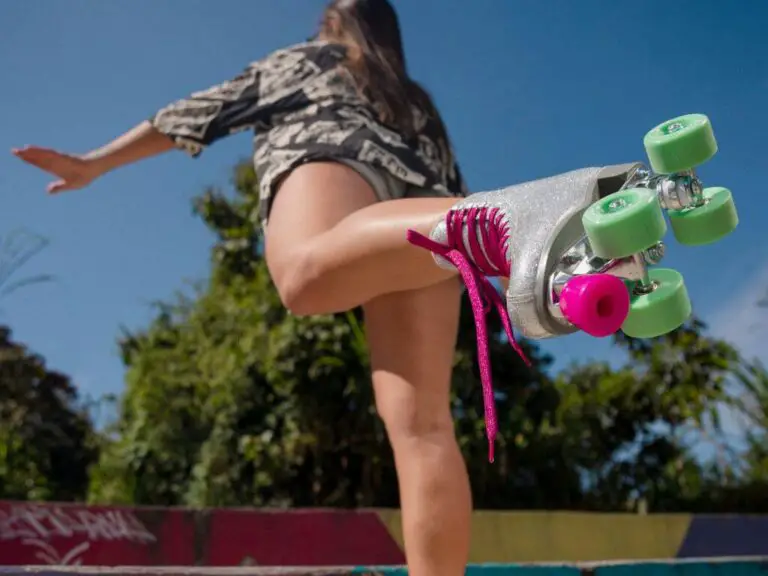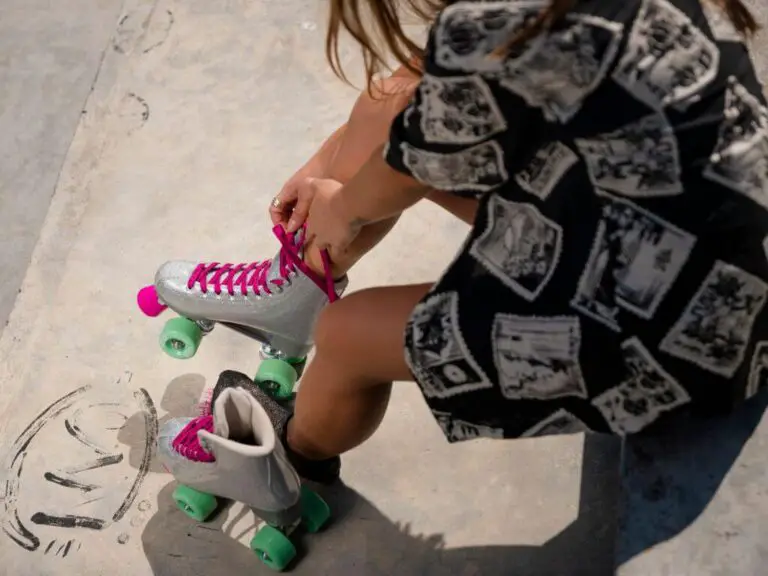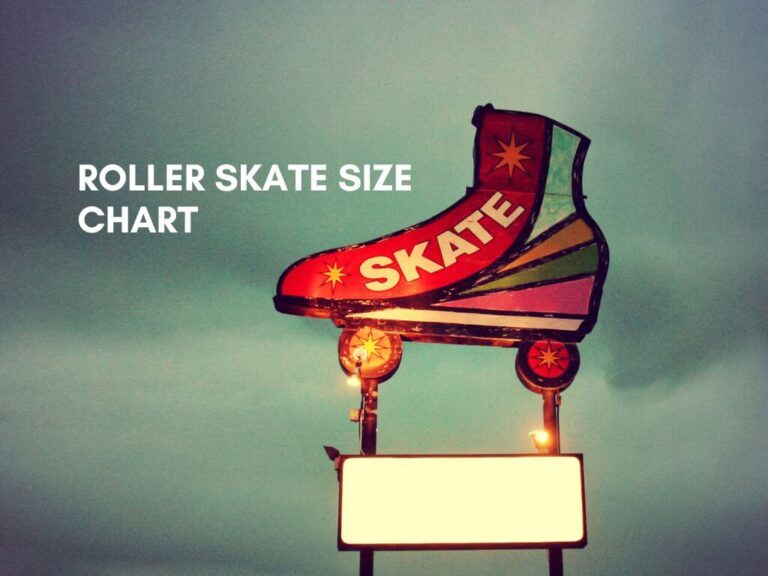Ever found yourself torn between roller skates and roller blades? 🛼 vs 🛼 You’re not alone! Whether you’re reliving childhood memories or embracing a new hobby, choosing the right wheels can be a real head-scratcher. But fear not, because we’re about to roll through the ultimate showdown: Roller Skates vs. Roller Blades.
From design differences to cost considerations, we’ll lace up and dive into every aspect of these popular rolling companions. You’ll discover which option might suit your style, skill level, and budget best. So, are you ready to glide through the pros and cons of each? Let’s kick off this wheely great comparison by exploring the key differences between roller skates and roller blades, starting with their unique designs!
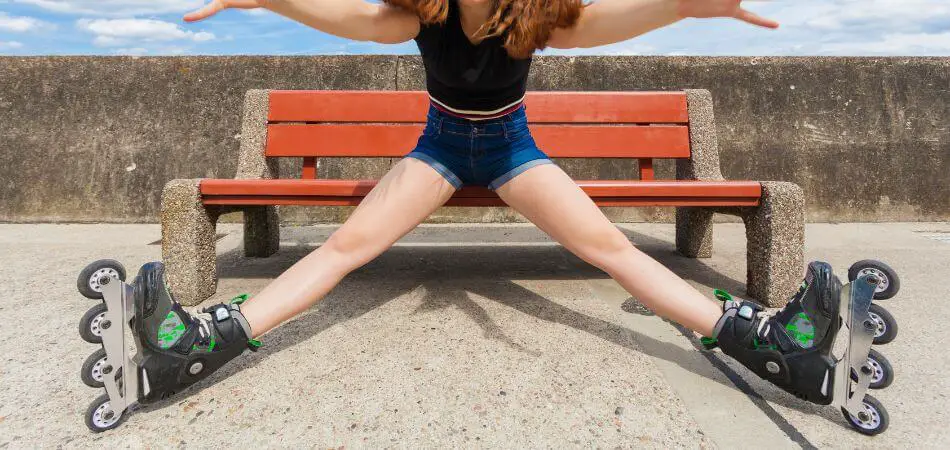
Design Differences
As we dive into the world of roller skating, it’s crucial to understand the fundamental design differences between roller skates and roller blades. These distinctions greatly influence their performance, feel, and suitability for various activities.
A. Wheel Configuration
The wheel configuration is perhaps the most noticeable difference between roller skates and roller blades. Let’s break it down:
| Feature | Roller Skates | Roller Blades |
|---|---|---|
| Wheel Arrangement | Two parallel rows of two wheels each | Single line of wheels (typically 3-5) |
| Wheel Size | Generally smaller (45-65mm) | Usually larger (72-110mm) |
| Stability | More stable due to wider base | Less stable, but more maneuverable |
| Speed | Generally slower | Typically faster |
Roller skates’ quad wheel setup provides a wider base, offering better stability for beginners and allowing for more precise movements in activities like artistic skating. On the other hand, roller blades’ inline configuration allows for greater speed and maneuverability, making them ideal for activities like speed skating or urban commuting.
B. Boot Structure
The boot design plays a crucial role in comfort, support, and overall skating experience:
- Roller Skates:
- Often have a more traditional shoe-like appearance
- Can be high-top or low-cut
- Usually offer more ankle flexibility
- Come in various styles (e.g., artistic, derby, outdoor)
- Roller Blades:
- Typically have a more modern, streamlined look
- Usually extend above the ankle for added support
- Often feature a hard outer shell with a softer inner boot
- Designs vary based on intended use (e.g., recreational, aggressive, speed)
The boot structure affects not only comfort but also your ability to perform certain movements and tricks. Roller skates generally allow for more ankle movement, which is beneficial for dance-like motions, while roller blades provide more ankle support for high-speed skating and jumps.
C. Brake Systems
Braking is a crucial aspect of skating safety and control. The brake systems on roller skates and roller blades differ significantly:
- Roller Skates:
- Toe stop at the front of the skate
- Used for stopping and certain maneuvers
- Can be adjusted or replaced
- Roller Blades:
- Heel brake typically on the right skate (for right-handed skaters)
- Some models have no brake for advanced users
- Brake can be removed or transferred between skates
While both systems are effective, they require different techniques to master. The toe stop on roller skates allows for quick stops and pivots, which is particularly useful in roller derby or artistic skating. The heel brake on roller blades is more intuitive for beginners and effective for gradual stops at higher speeds.
Understanding these design differences is crucial when choosing between roller skates and roller blades. Your choice will depend on your intended use, personal preferences, and skating goals.
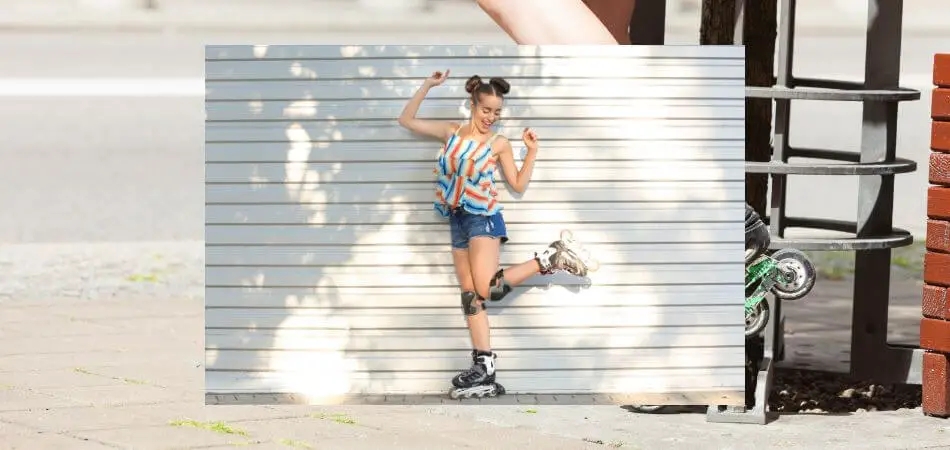
Performance Comparison
Now that we’ve covered the design differences between roller skates and roller blades, let’s dive into how these differences translate into performance. Understanding the performance aspects will help you choose the right option for your skating needs.
A. Speed and Agility
When it comes to speed, roller blades generally have the upper hand. The inline wheel configuration allows for:
- Reduced friction with the ground
- More efficient power transfer
- Streamlined movement
Roller skates, while not as fast, offer:
- Quick starts and stops
- Easier acceleration in short bursts
- Better agility for tight turns and spins
| Aspect | Roller Blades | Roller Skates |
|---|---|---|
| Top Speed | Higher | Lower |
| Acceleration | Gradual | Quick |
| Energy Efficiency | More efficient | Less efficient |
B. Stability and Balance
You’ll find that roller skates provide better overall stability due to their wider base. This makes them:
- Easier for beginners to maintain balance
- More stable at lower speeds
- Better for tricks that require a solid stance
Roller blades, however, offer:
- Improved stability at higher speeds
- Better balance for forward motion
- Enhanced ankle support
C. Maneuverability
Roller skates shine when it comes to maneuverability, especially in tight spaces. You’ll appreciate their:
- Ability to make sharp turns
- Ease of changing direction quickly
- Suitability for dance-like movements
Roller blades excel in:
- Long, sweeping turns
- Maintaining a consistent line
- Navigating obstacles at higher speeds
D. Stopping Power
When it comes to stopping, both types of skates have their strengths:
Roller skates:
- Toe stops for quick, intuitive braking
- Ability to turn sideways for a drag stop
Roller blades:
- Heel brakes (on recreational models)
- T-stop method for more advanced users
Your choice between roller skates and roller blades will depend on your specific needs and the type of skating you plan to do. If you prioritize speed and efficiency for longer distances, roller blades might be your best bet. However, if you’re looking for better maneuverability and stability at lower speeds, roller skates could be the way to go.
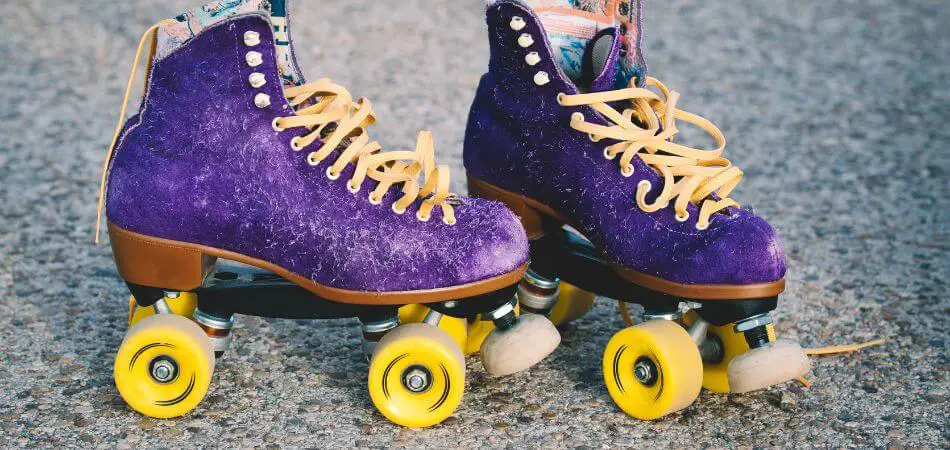
Skill Requirements
Now that we’ve compared the performance aspects, let’s dive into the skill requirements for roller skates and roller blades. Understanding these differences will help you choose the right option based on your experience level and goals.
Learning Curve
When it comes to mastering roller skates and roller blades, you’ll find distinct learning curves:
- Roller Skates: You may find roller skates easier to balance on initially due to their wider base. The side-by-side wheel configuration provides more stability, making it less intimidating for beginners.
- Roller Blades: While they might seem trickier at first, you’ll likely pick up speed faster with roller blades. The inline wheel design requires more balance but offers better maneuverability once you get the hang of it.
Here’s a comparison of the learning progression:
| Skill Level | Roller Skates | Roller Blades |
|---|---|---|
| Beginner | Easier balance, slower speed | Harder balance, faster speed |
| Intermediate | Moderate maneuverability | High maneuverability |
| Advanced | Complex footwork possible | Excellent for speed and agility |
Technique Variations
You’ll notice significant differences in skating techniques between the two:
- Stride:
- Roller Skates: You’ll use a side-to-side push-off motion.
- Roller Blades: Your stride will be more linear, similar to ice skating.
- Stopping:
- Roller Skates: You can use the toe stop or T-stop methods.
- Roller Blades: You’ll learn heel brake stops or advanced techniques like T-stops and hockey stops.
- Turning:
- Roller Skates: You’ll find it easier to make sharp turns and pivots.
- Roller Blades: You’ll excel in long, sweeping turns at higher speeds.
Tricks and Stunts
Both roller skates and roller blades offer exciting possibilities for tricks and stunts, but they cater to different styles:
- Roller Skates: You’ll find these ideal for:
- Artistic skating routines
- Dance moves and spins
- Jam skating techniques
- Roller Blades: These are better suited for:
- Aggressive inline skating (grinds and jumps)
- Slalom skating
- Speed skating tricks
As you progress in your skating journey, you’ll discover that each type of skate has its unique strengths when it comes to performing tricks. Your choice will depend on the style of skating that appeals to you most.
Comfort and Fit
Now that we’ve examined the skill requirements for both roller skates and roller blades, let’s delve into the crucial aspects of comfort and fit. These factors can significantly impact your skating experience and overall enjoyment.
Ankle Support
When it comes to ankle support, roller skates and roller blades offer different experiences:
| Feature | Roller Skates | Roller Blades |
|---|---|---|
| Support Level | Moderate to High | High |
| Flexibility | Limited | Greater |
| Stability | Enhanced | Moderate |
Roller skates typically provide a snug fit around your ankles, offering good support and stability. This can be particularly beneficial for beginners who are still working on their balance. On the other hand, roller blades generally offer superior ankle support due to their higher boot design. This extra support can help reduce fatigue during longer skating sessions and provide better control for advanced maneuvers.
Foot Positioning
The way your feet are positioned in roller skates versus roller blades can greatly affect your comfort:
- Roller Skates:
- Your feet are positioned flat, similar to regular shoes
- Weight is distributed more evenly across your foot
- Can feel more natural for some skaters
- Roller Blades:
- Your feet are positioned in a slight forward lean
- Weight is concentrated more on the balls of your feet
- May take some getting used to, but can enhance performance
The flat foot position in roller skates can be more comfortable for extended periods, especially if you’re not used to the forward lean of roller blades. However, the positioning in roller blades can give you better power transfer and agility once you’ve adapted to it.
Ventilation
Proper ventilation is crucial for maintaining comfort during your skating sessions. Here’s how roller skates and roller blades compare:
Roller skates often have better ventilation due to their more open design. The boot typically doesn’t cover as much of your foot, allowing for better air circulation. This can be a significant advantage during hot weather or intense skating sessions.
Roller blades, with their higher, more enclosed boot design, may offer less ventilation. However, many modern roller blade models incorporate ventilation systems to mitigate this issue. Look for models with mesh panels or strategically placed vents to keep your feet cool and dry.
When choosing between roller skates and roller blades, consider your personal preferences and skating style. If you prioritize breathability and a more natural foot position, roller skates might be your best bet. If you’re looking for maximum ankle support and don’t mind a slightly warmer fit, roller blades could be the way to go. Remember, the most comfortable option is the one that fits you properly and suits your individual needs.

Versatility
When it comes to versatility, both roller skates and roller blades offer unique advantages. Let’s explore how these wheeled wonders adapt to different environments and activities.
Indoor vs Outdoor Use
You’ll find that both roller skates and roller blades can be used indoors and outdoors, but they excel in different ways:
- Roller Skates:
- Indoor: Perfect for smooth surfaces like roller rinks
- Outdoor: Suitable for sidewalks and paved paths
- Roller Blades:
- Indoor: Great for indoor sports and fitness
- Outdoor: Excel on longer stretches of pavement
Here’s a quick comparison table:
| Feature | Roller Skates | Roller Blades |
|---|---|---|
| Indoor Maneuverability | High | Moderate |
| Outdoor Speed | Moderate | High |
| Smooth Surface Performance | Excellent | Good |
| Rough Surface Performance | Fair | Good |
Terrain Adaptability
You’ll appreciate how each type of skate handles different terrains:
- Roller Skates:
- Smoother on flat surfaces
- Better for navigating crowded areas
- Struggle on rough or uneven terrain
- Roller Blades:
- Handle slight inclines more easily
- Better for longer distances
- More stable on varied surfaces
Sport-Specific Applications
You’ll find that both types of skates have carved out their niches in various sports:
- Roller Skates:
- Roller Derby
- Artistic Skating
- Jam Skating
- Roller Blades:
- Speed Skating
- Hockey
- Freestyle Slalom
Now that you understand the versatility of both roller skates and roller blades, you can see how each has its strengths in different environments and applications. Whether you’re looking to glide gracefully in a rink, zoom down city streets, or participate in specific sports, your choice between roller skates and roller blades will depend on your intended use.
As you consider the versatility of these skating options, it’s important to also think about the comfort and fit they provide. This aspect can greatly impact your overall skating experience and performance across various terrains and activities.
Maintenance and Durability
Now that we’ve explored the versatility of roller skates and roller blades, let’s dive into an equally important aspect: maintenance and durability. Proper care can significantly extend the life of your wheels and enhance your skating experience.
A. Wheel Replacement
Wheel replacement is a crucial part of maintaining both roller skates and roller blades. The frequency of replacement depends on your skating style and surface conditions. Here’s a quick comparison:
| Skate Type | Average Replacement Frequency | Signs of Wear |
|---|---|---|
| Roller Skates | Every 3-6 months | Flat spots, coning |
| Roller Blades | Every 6-12 months | Uneven wear, reduced grip |
To maximize wheel life, you should rotate them regularly, much like car tires. For roller skates, swap the front and back wheels on each skate. For roller blades, move wheels from front to back in a specific pattern.
B. Bearing Care
Bearings are the unsung heroes of smooth skating. To keep them in top condition:
- Clean your bearings every 2-3 months
- Use a specialized bearing cleaner or isopropyl alcohol
- Dry thoroughly and re-lubricate with skating-specific oil
- Replace bearings annually or when they become noisy or slow
Remember, well-maintained bearings not only improve your skating experience but also contribute to the overall longevity of your skates.
C. Frame Longevity
The frame is the backbone of your skates, connecting the boot to the wheels. While frames are generally durable, they can suffer from:
- Cracks or bends from high-impact skating
- Loosening of mounting screws
- Corrosion (especially in metal frames)
To extend frame life:
- Regularly inspect for damage
- Tighten loose screws
- Clean and dry frames after wet conditions
- Consider upgrading to more durable materials if you’re an aggressive skater
D. Boot Wear and Tear
Your skate boots take a beating with every stride. Here’s how to keep them in good shape:
- Clean regularly with mild soap and water
- Dry thoroughly, avoiding direct heat sources
- Use leather conditioner for leather boots
- Replace worn laces and fasteners promptly
Pay special attention to high-wear areas like the toe box and heel. If you notice significant wear or discomfort, it might be time for new boots.
By following these maintenance tips, you’ll not only extend the life of your skates but also ensure a safer, more enjoyable skating experience. Regular care might seem time-consuming, but it’s a small price to pay for the longevity and performance of your beloved wheels.
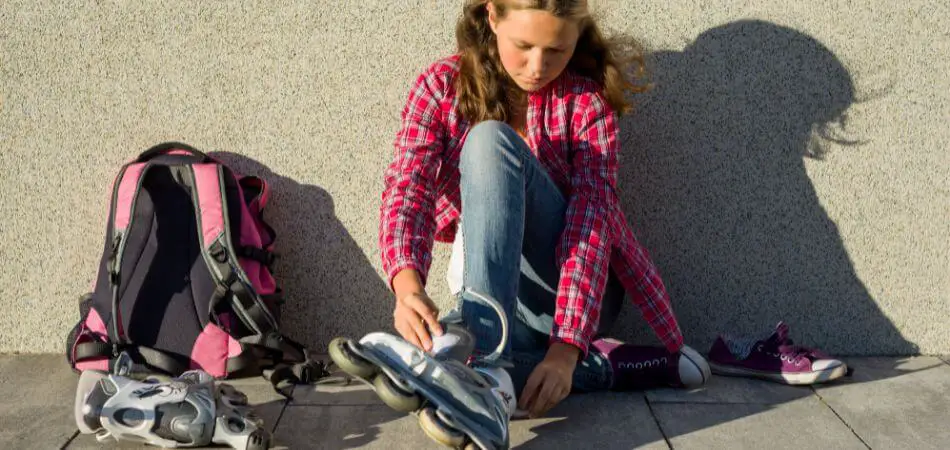
Cost Considerations
When deciding between roller skates and roller blades, it’s crucial to consider the financial aspects of your investment. Let’s break down the cost considerations to help you make an informed decision.
A. Initial Investment
The upfront cost of roller skates and roller blades can vary significantly depending on the quality and brand you choose. Here’s a comparison of typical price ranges:
| Type | Entry-Level | Mid-Range | High-End |
|---|---|---|---|
| Roller Skates | $50-$100 | $100-$300 | $300-$1000+ |
| Roller Blades | $70-$150 | $150-$400 | $400-$1500+ |
As you can see, roller skates tend to have a slightly lower entry point, making them more accessible for beginners or those on a tight budget. However, high-end models of both types can be quite expensive, catering to professional or serious enthusiasts.
B. Replacement Parts
Over time, you’ll need to replace various parts of your skates or blades. Here are some common replacement parts and their approximate costs:
- Wheels: $20-$80 per set
- Bearings: $15-$100 per set
- Toe stops (for roller skates): $10-$30 per pair
- Brake pads (for roller blades): $15-$40 per pair
While the costs are similar, roller skates typically have more parts that may need replacing, such as toe stops and trucks. Roller blades, on the other hand, have fewer components but may require more frequent wheel replacements due to their inline configuration.
C. Long-Term Value
When considering long-term value, think about:
- Durability: High-quality roller skates and roller blades can last for years with proper maintenance.
- Versatility: If you plan to use your skates for various activities, the investment may be more worthwhile.
- Resale value: Well-maintained skates or blades can often be resold, recouping some of your initial investment.
Remember that the true value of your purchase extends beyond the price tag. Consider factors like:
- How often you’ll use them
- The enjoyment and health benefits you’ll gain
- The potential for skill development and participation in skating communities
Ultimately, the cost-effectiveness of roller skates versus roller blades depends on your individual needs, preferences, and intended use. By carefully weighing these cost considerations against your personal goals, you’ll be better equipped to make a choice that offers the best value for your money.
Conclusion
Choosing between roller skates and roller blades ultimately comes down to your personal preferences and goals. Both options offer unique advantages and challenges, from design differences to performance capabilities. Consider factors like comfort, versatility, and skill requirements when making your decision.
Remember that whether you opt for the classic charm of roller skates or the sleek efficiency of roller blades, you’re embarking on an exciting journey of fun and fitness. Whichever you choose, prioritize safety, practice regularly, and most importantly, enjoy the ride. Your perfect rolling adventure awaits!
FAQ’s
Is it easier to roller skate or rollerblade?
Roller skating is generally easier for beginners due to the stability provided by its four-wheel setup. Rollerblading, with its inline wheels, requires more balance and control, making it trickier initially but potentially better for speed and agility as skills develop.
What type of skates are best for beginners?
For beginners, quad roller skates are ideal due to their stability, easy balance, and smooth control, making them great for learning. Adjustable inline skates are another good option for gradual skill progression, especially if you plan to transition to more advanced inline skating.
Is rollerblading harder than figure skating?
Rollerblading and figure skating each have unique challenges; figure skating often requires more balance and precision due to ice’s slippery surface, while rollerblading demands control over outdoor terrains. Generally, figure skating is considered harder due to complex jumps, spins, and the difficulty of mastering movements on ice.
Is roller skating a good workout?
Yes, roller skating is an excellent workout that can help you burn calories, build muscle, and improve your cardiovascular health. It engages multiple muscle groups, including your legs, core, and arms.

